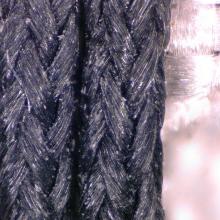West African societies have a long history of interactions with insect materials as a primary source of inspiration, creativity, and innovation. Ideas, knowledge, and techniques emerging from these material encounters form the core of an indigenous science of materials. In the light of an anthropology of techniques, this project focuses on aspects of the social and historical formation of an indigenous science of materials about wild silk, by considering in particular the epistemological complexity, cosmological meaning, and social implications of silk products in Burkina Faso and Mali. West African wild silk is a complex material that demonstrates unique medicinal, magical, material and visual properties such as its sheen, for which the silk has been extensively traded across West Africa for centuries and mainly consumed by women. The definition of a Marka-Dafing and Dogon women’s science of materials lies here in women’s close examination of the materiality of wild silk that implies silk’s efficacy, affordance, and agency. Hence, this research highlights women’s techniques of silk production including cooking, spinning and weaving, in tandem with their belief and knowledge systems associated with the life-cycles of caterpillars, their habitat and the insect’s techniques of producing silk. Field data collected through an ethnographic approach is complemented with a study of museum collections and archives that seek to compare women’s perceptions of materials and of silkworms with museological interpretations of silk artifacts, and therefore of species and materials themselves.

Inside West African silk, an Indigenous science of materials. Photograph by Laurence Douny.


